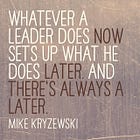I hope that you were able to watch all the Olympics your eyeballs could handle. I’m still catching up on events that I didn’t get to see live. One event that I did see live was the men’s high jump final and I saw something in that competition that I wanted to share.
In the final rounds of the high jump competition, Shelby McEwen, an American athlete was one of two competitors remaining, so he was vying for a gold medal. He was about to attempt jumping a career-best height, something that he had never done in competition. You can’t get much more of a high-pressure environment than that in competitive sports. And that led to this moment.
While I think that his success in this jump and his eventual silver medal are remarkable, they aren’t what struck me most. What I found most remarkable in this pressure-filled, once-every-four-years opportunity was McEwen’s physical displays of his thoughts and emotions in the moments leading up to his jump. I wrote recently about proactive thought cycles (see links below) and watching McEwen is great insight into what an athlete can look like as they proactively approach their performance.
I believe it is important for coaches to learn what athletes look and sound like during matches and competition so they can interact effectively and constructively. As a result of this value, I often focus on players’ and coaches’ body language and communication when I’m watching sports. Watching McEwen in this moment was both informative and inspiring.
McEwen can be seen making several moves with his upper body while he talks to himself. He appears to be priming himself by embodying part of the jump while verbally reminding himself of something. These are excellent examples of the feeling portion of the proactive thought cycle. If I were McEwen’s coach, I would be noting which physical actions he was focusing on and then watching his performance to see what those actions looked like. If he came over to me after his jump (track and field coaches are in the stands rather than in the competition area), I would ask him what his focus was and what he noticed about that aspect of his performance. I’d ask him what he wants to focus on for the next jump and how he wants it to feel when he does it. I’d close our conversation with a reminder of my belief in him and in his course of action.
But what I really want to talk about is McEwen’s emotions before his jump. One of my most highly-held values is that my job as a coach is to free athletes to compete at their best. That freedom can look a lot of different ways but it is unmistakable in McEwen as he prepares to jump. Throughout his preparation, McEwen can barely contain his smile. The way his eyes stay open and relaxed, even as they dart back and forth between his marks and the bar, suggests that he feels in control of himself. His trust and belief in himself, despite trying something he’d never done in competition, is a powerful example of self efficacy in the most challenging of moments. I would dare say that McEwen is joyful as he begins his approach.
What I will take away from this moment in McEwen’s life is his feeling of joy, his feeling of freedom to go for it. I will never coach at the Olympic Games but that doesn’t mean that there won’t be what feels like equivalent kinds of pressure and uncertainty in the athletes I work with. I can help athletes in my care create that same joy and freedom, despite their unique stresses and challenges. If anyone were to record me and athletes in my care in competition, I want us to look like Shelby McEwen in this moment.






